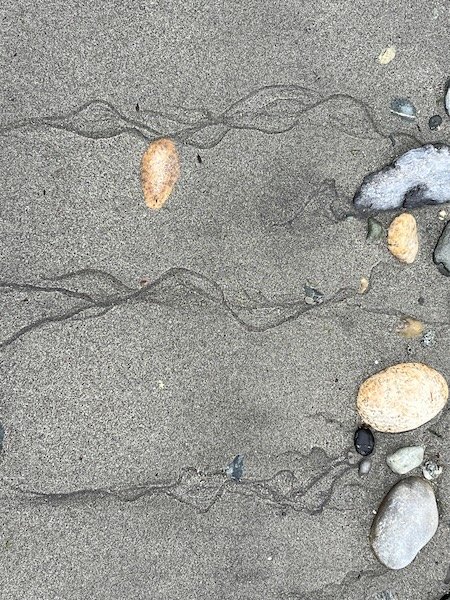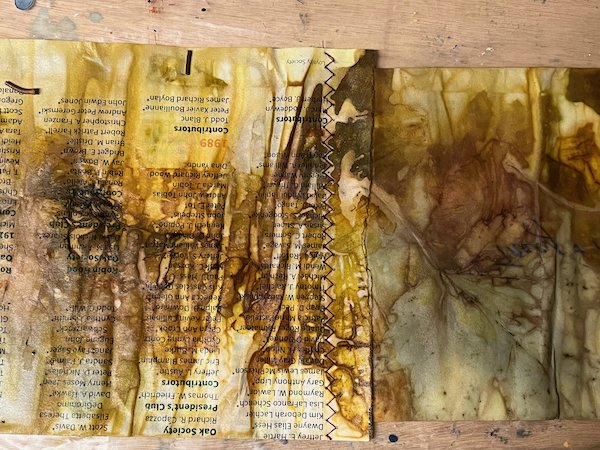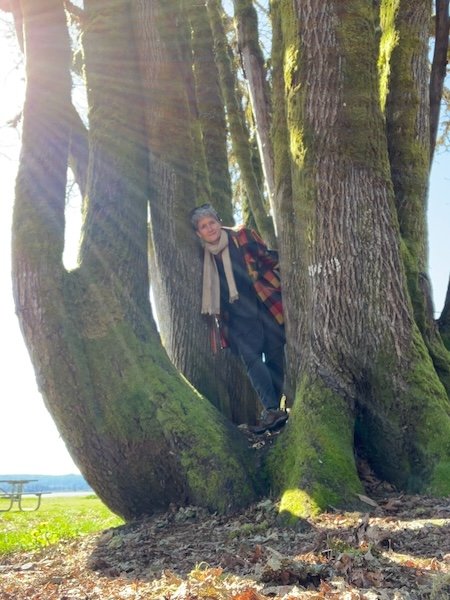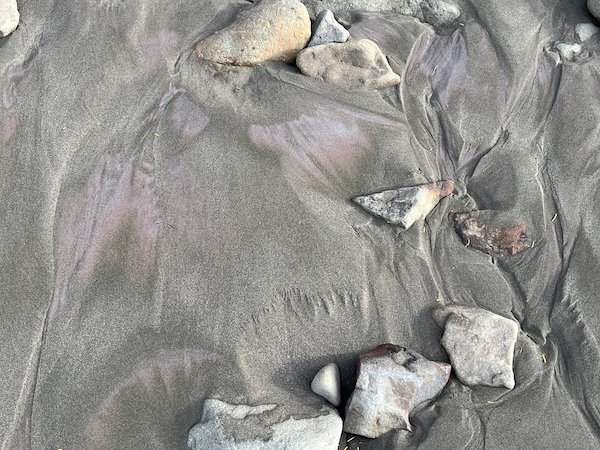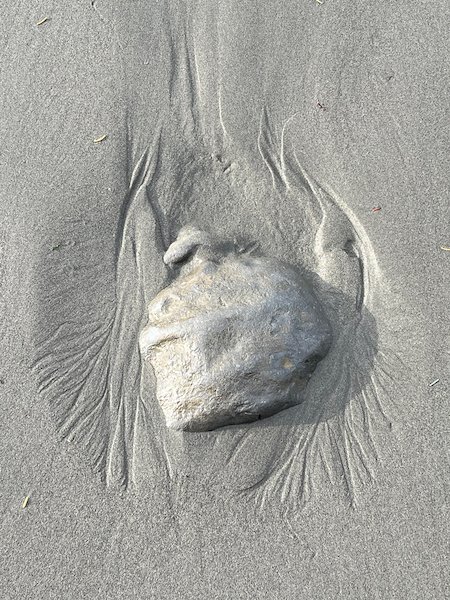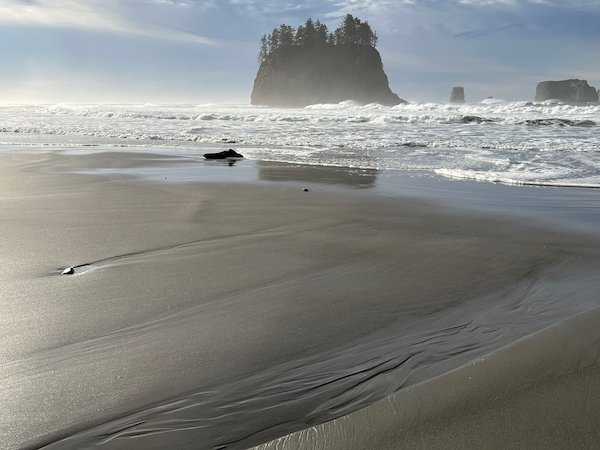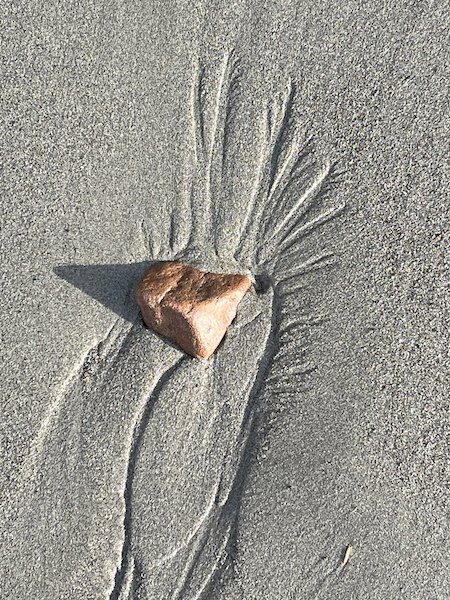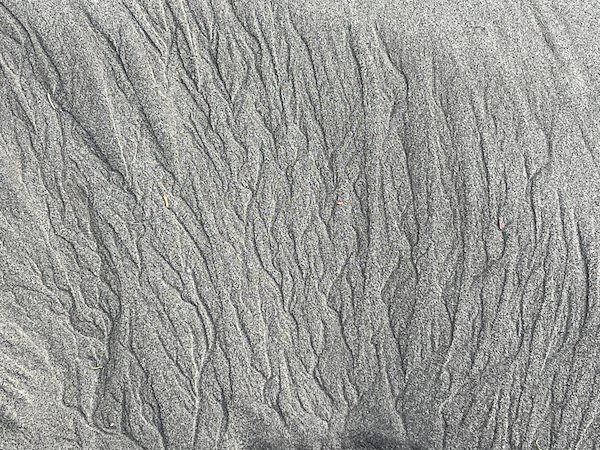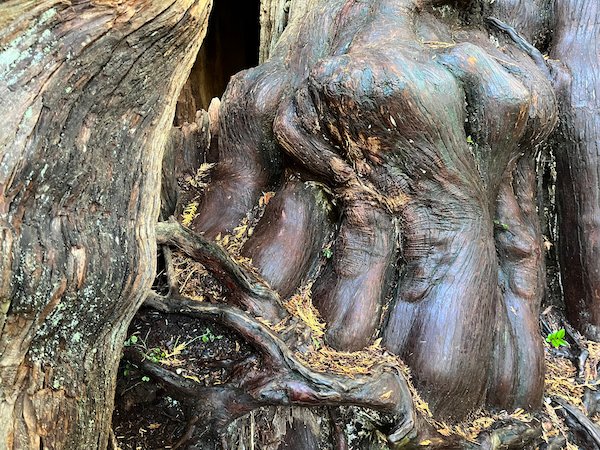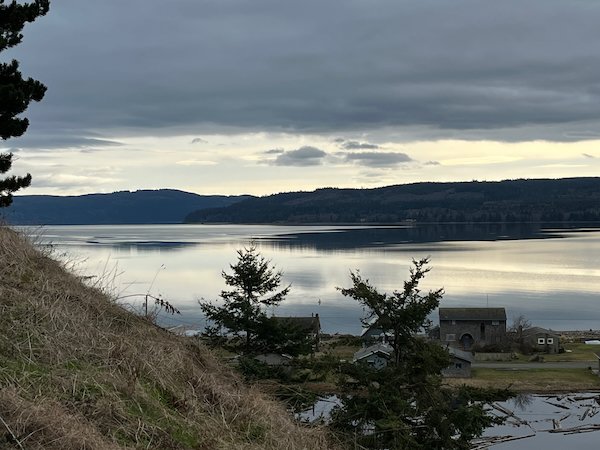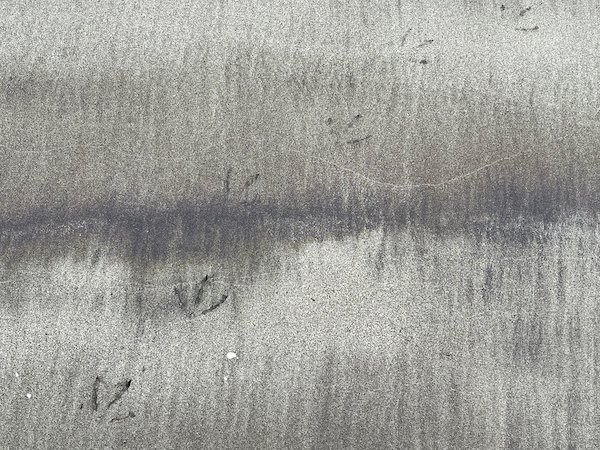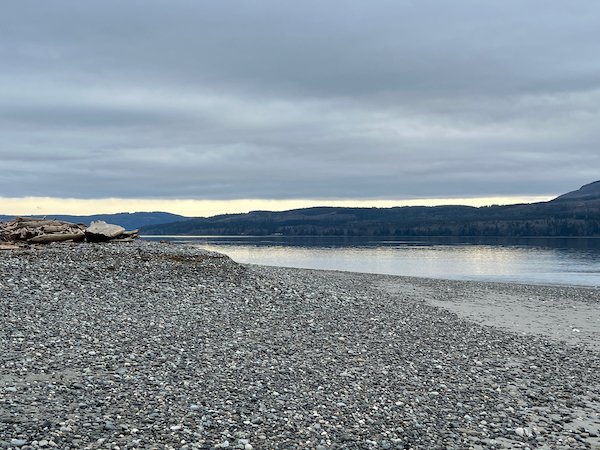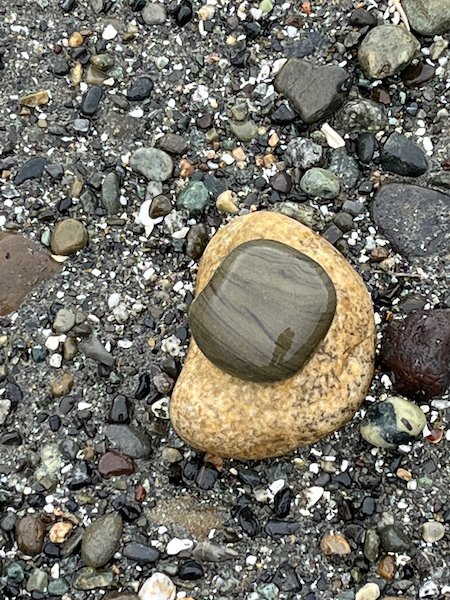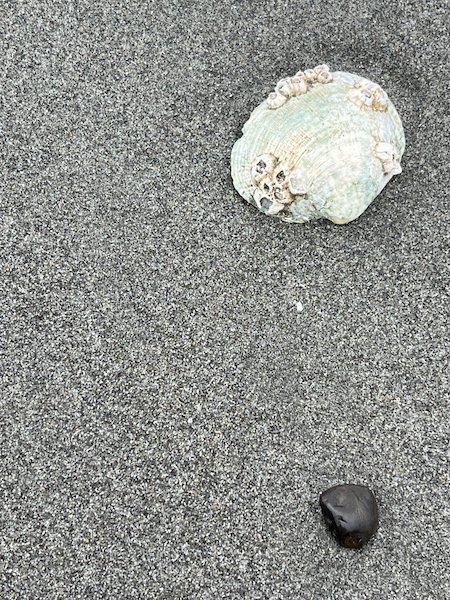What I love about the picture above is that I really can’t tell you what is going on there. I still don’t know yet. But the alchemical invitation of combined elements feels activated, there is potential for an emergence of some kind, however small and searching. That’s the nature of my studio space these days. It holds and pools and mixes together images, textures, acts of mark making and folding and tying - possibly generating amulets, or maybe the assemblage itself is the amulet, a protected and protective space to hold thoughts that wish to heal and halt destruction.
This rock also felt strongly of healing and wholeness. Such a wise and soothing design, so smooth and comfortable in the hand. I carried it along the beach, my first time back since an incident of local violence, and I left it there to mark the site with its calm assurance, another hope for healing and reparation.
I only feel capable of temporary offerings these days, momentary indications of care and tentative hope. I gain reassurance from these ancient forms that don’t need us humans, really.
A cedar showing me the beauty of a difficult life.
In preparation for a moss walk with the land trust study group, I was thinking about two aspects of mosses’ being. First, their extreme delicacy and sensitivity: with leaves only one cell thick, mosses have no protective layer filtering the outside world. The environment permeates their cells, making them highly susceptible to toxicity and air pollution. At the same time, many mosses are drought tolerant, can essentially go dormant until conditions are suitable to flourish, and when land has been depleted through mining or deforestation, they are often the first to come in and begin to find ways to grow. As some of the oldest plants on the planet, mosses have an ability to make soil habitable for other organisms. So they are simultaneously more sensitive, and more likely to create the conditions for communal thriving. These sound like the kind of characteristics the world needs, and it’s encouraging for those of us who have the experience of being too sensitive, feeling too much and too easily, to recognize that we also may have the capacity for encouraging better conditions for everyone, for starting over with small-scale care and attentiveness.
I roll it around in my mind as I visit the mosses and watch the birds and handle fiber: slow, gentle delicacy as teaching and strength.
Cotton from Traditions in Cloth, leather-whorl spindle by Allen Berry
Recycled paper stitched together and dyed with onion skins.
Maybe that’s where hope resides - with those of us who are unable to tolerate bombing of children, hospitals, libraries. Maybe our very intolerance, our inability to harden against this unacceptable reality, is what will create conditions where more of us can grow together.
A Bigleaf Maple offering shelter & embrace.
Small, persistent offerings feel small, but also crucial, as so much is being wantonly destroyed. Like the stitches in this Palestinian embroidery, creating meaning and preserving an attentiveness to life, to identity and place.
Palestinian cross stitch, found by chance in a local consignment shop. Someone tells me it has West Bank motifs from the Bethlehem area (thank you, Dot Ranch!) Along the right side are cedar/cypress trees of life.



